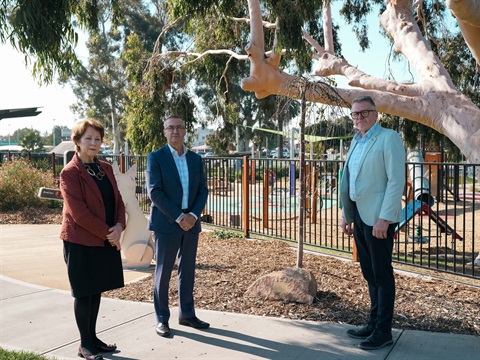Rural aged care residents, residents on more prescribed medications and those with co-morbidities are more likely to be transported to hospital after an Ambulance call-out, new research has shown.
Ambulance call-out during business hours was also associated with greater odds of transport than out-of-hours calls.
Bolton Clarke Research Institute Principal Research Fellow Professor Judy Lowthian said the research, which analysed data from Ambulance Victoria and is published in the Australasian Journal on Ageing, is unique in describing predictors of emergency transport to hospital for older people living in residential aged care.
“In addition to finding a very high rate of patient transport we have identified patient, clinical and temporal factors that influence the odds of emergency transport to hospital for this population,” she said.
The insights will help identify residents who are at heightened risk of an unplanned emergency department transfer and allow for earlier management of acute health events through primary and community care teams.
Findings include:
- Living in a rural area remained significant, perhaps reflecting less access to community services or alternate care providers
- Ambulance call-out within business hours was associated with greater odds of transport than after hours calls
- Odds of transport to hospital were higher for people with a history of depression, cardiovascular disease, stroke, osteoporosis or previous fracture and lower for people with chronic pulmonary disease and congestive cardiac failure
- Residents with higher combined co-morbidity as measured by the Charlson Comorbidity Index scores had greater odds of transport to hospital
- Antibiotics and anticoagulants, psychoactive agents and opioids remained significantly associated with transport to hospital, with the greatest effect seen for antipsychotics
- Compared with a primary medical complaint, people presenting with physical trauma had lower odds of being transported to hospital
Professor Lowthian said from the available data it was not possible to explore why some diagnoses were more highly associated with transport than others.
“Some may be due to requiring an intervention outside a paramedic’s scope of practice, while others such as suspected stroke, cardiac arrhythmia or respiratory tract infection may be due to acuity of associated symptoms or requirement for investigations such as CT and X-ray which are less accessible by prehospital or community clinicians,” she said.
“People with abnormal vital signs – particularly respiratory rate, initial pain score and conscious state – had higher odds of being transported to hospital, however transport rates remained high even for people with vital signs within normal limits.
“These findings may suggest frequent transport of patients with non-emergent conditions.”
Dwyer RA, Gabbe BJ, Tran T, Smith K, Lowthian JA. Predictors of transport to hospital after emergency ambulance call-out for older people living in residential aged care. Australas J Ageing. 2020;00:1-9. https://doi.org/10.1111/ajag.12803






